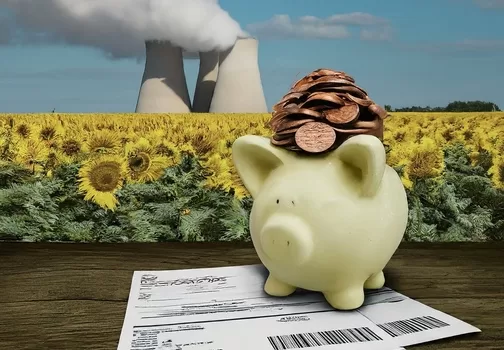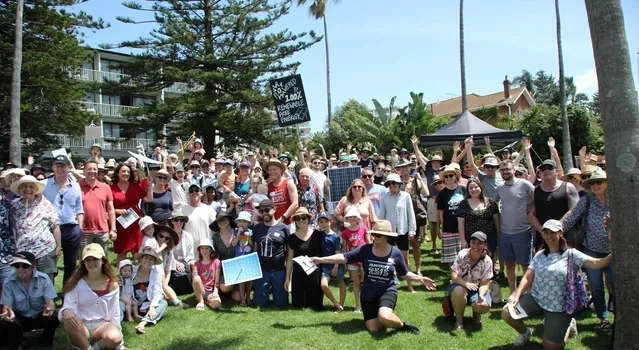Australia’s nuclear energy policy has evolved from early exploration and ambitious plans for power generation to a focus on uranium mining and stringent export controls. While nuclear power remains a topic of debate, economic, environmental, and regulatory challenges have so far prevented its adoption.
The future of nuclear energy in Australia will depend on technological advancements, public opinion, and the broader context of the country’s energy strategy.
Advertisement:
History of Australia’s Nuclear Energy Policy
Early Developments and Exploration
1950s-1960s: Initial Exploration and Ambitions Australia’s interest in nuclear energy began in the early 1950s with the discovery of uranium deposits in the Northern Territory and South Australia. The country was seen as a potential key player in the global nuclear industry due to its significant uranium reserves. In 1953, the Australian Atomic Energy Commission (AAEC) was established to oversee nuclear research and development.
Lucas Heights Reactor The AAEC built the High Flux Australian Reactor (HIFAR) at Lucas Heights, New South Wales, in 1958. HIFAR was primarily used for research and the production of medical isotopes rather than power generation.
1960s: Interest in Nuclear Power During the 1960s, there were discussions about developing nuclear power plants. The Jervis Bay Nuclear Power Plant project, proposed in 1969, was the most notable. However, this project was eventually abandoned in 1971 due to economic reasons and changing political priorities.
Shift in Policy and Uranium Export
1970s-1980s: Focus on Uranium Mining and Export By the 1970s, Australia’s nuclear policy shifted towards uranium mining and export rather than developing nuclear power plants. The government encouraged the expansion of uranium mining, leading to the development of major mines such as Ranger, Nabarlek, and Olympic Dam.
Uranium Export Policy The Australian government developed strict policies for uranium export, emphasizing non-proliferation. In 1977, Australia signed the Nuclear Non-Proliferation Treaty (NPT), committing to ensuring that exported uranium would only be used for peaceful purposes.
Environmental and Indigenous Concerns Throughout the 1980s, environmental groups and Indigenous communities raised concerns about the impact of uranium mining. Protests and campaigns led to increased scrutiny and stricter regulations on mining operations.
Policy Reforms and Public Debate
1990s-2000s: Renewed Interest and Public Debate The 1990s saw renewed interest in nuclear energy as a potential solution to climate change. The Howard government, elected in 1996, supported nuclear energy and commissioned studies to explore its feasibility in Australia.
Nuclear Power Inquiry In 2006, the Prime Minister’s Uranium Mining, Processing, and Nuclear Energy Review (UMPNER) was established to assess the potential role of nuclear energy in Australia’s future energy mix. The review concluded that nuclear power could be economically viable but recommended further studies and public consultation.
Contemporary Developments
2010s: Shifting Focus and State Policies The debate on nuclear energy continued into the 2010s, with various states adopting different positions. South Australia, under Premier Jay Weatherill, launched a Royal Commission in 2015 to investigate the potential for nuclear fuel cycle activities, including power generation. The Commission’s 2016 report recommended pursuing nuclear waste storage and considering nuclear power in the future.
Technological Innovations Advancements in nuclear technology, such as small modular reactors (SMRs), have reignited discussions about nuclear power’s role in Australia’s energy future. Proponents argue that SMRs could address safety and economic concerns associated with traditional large reactors.
Current Status and Future Prospects As of 2024, Australia does not have any commercial nuclear power plants. The focus remains on uranium mining and export, with significant debates about the feasibility and desirability of nuclear power. The federal government maintains a cautious approach, emphasizing renewable energy and energy storage as primary strategies for reducing carbon emissions.
Key Challenges and Considerations
Public Opinion Public opinion on nuclear energy remains divided. Concerns about safety, waste management, and environmental impact are balanced against the potential benefits of reliable, low-carbon energy.
Regulatory and Legislative Barriers Current legislation, such as the Environmental Protection and Biodiversity Conservation Act 1999 (EPBC Act), effectively prohibits the development of nuclear power plants. Any move towards nuclear energy would require significant regulatory and legislative changes.
Economic Viability The economic viability of nuclear power in Australia is a contentious issue. High capital costs, long development timelines, and competition from rapidly advancing renewable technologies pose significant challenges.
Global Context and Non-Proliferation Australia’s commitment to non-proliferation and its role in the global nuclear landscape continue to influence policy decisions. Ensuring that nuclear activities align with international obligations remains a priority.
Opposition to Nuclear Energy in Australia
Opposition to nuclear energy in Australia has been consistent and multifaceted, involving a broad coalition of environmental groups, Indigenous communities, public health advocates, and political parties. The opposition is rooted in concerns about environmental impacts, public safety, economic viability, and social justice.
Here is a detailed look at the various dimensions of opposition to nuclear energy in Australia.
Environmental Concerns
Radioactive Waste Management One of the most significant environmental concerns is the long-term management of radioactive waste. Critics argue that Australia lacks the infrastructure and technology to safely store and manage high-level nuclear waste, which remains hazardous for thousands of years.
Risk of Accidents The potential for nuclear accidents, such as the Chernobyl disaster in 1986 and the Fukushima Daiichi incident in 2011, has heightened fears about the safety of nuclear power plants. Opponents worry about the catastrophic environmental and health impacts that could result from such accidents.
Impact on Natural Landscapes Uranium mining, which is essential for nuclear energy, can cause significant environmental degradation. Mining operations often lead to land disruption, water contamination, and loss of biodiversity. Australia’s unique ecosystems and protected areas are seen as being at risk.
Public Health and Safety
Radiation Exposure There are concerns about the health risks associated with radiation exposure. Opponents argue that the entire nuclear fuel cycle, from mining to waste disposal, poses potential health hazards to workers and local communities.
Emergency Preparedness Australia’s capacity to respond to nuclear emergencies is another critical issue. Critics highlight that the country lacks the necessary emergency response infrastructure and expertise to handle a nuclear crisis effectively.
Economic Viability
High Costs The high capital costs associated with building and maintaining nuclear power plants are a major point of contention. Opponents argue that these costs are not justified given the availability of cheaper and rapidly advancing renewable energy technologies, such as solar and wind power.
Long Development Timelines The long timelines required to develop nuclear power infrastructure are seen as a disadvantage. By the time nuclear plants could be operational, opponents argue that renewable energy technologies would have advanced even further, making nuclear power economically uncompetitive.
Renewable Energy Alternatives Australia has abundant renewable energy resources. Opponents believe that investment in solar, wind, and battery storage technologies is a more sustainable and economically viable approach to addressing the country’s energy needs and reducing carbon emissions.
Indigenous Rights and Social Justice
Impact on Indigenous Lands Many proposed sites for uranium mining and nuclear waste storage are located on Indigenous lands. Indigenous communities have often opposed these projects, citing the detrimental impacts on their land, culture, and livelihoods. There is also concern about the lack of proper consultation and consent from these communities.
Historical Injustices Opposition is also fueled by historical grievances, such as the British nuclear tests conducted at Maralinga in the 1950s and 1960s. These tests caused long-lasting health and environmental damage, disproportionately affecting Indigenous communities.
Political and Public Opposition
Political Parties Several political parties, including the Australian Greens and various independent politicians, have been vocal opponents of nuclear energy. They advocate for a focus on renewable energy and criticize nuclear power as unsafe and unnecessary.
Public Opinion Public opinion in Australia has generally been skeptical or opposed to nuclear energy. Polls indicate that many Australians prefer investment in renewable energy over nuclear power. This public sentiment influences political decisions and policy-making.
Key Opposition Groups
Environmental Organizations Groups such as the Australian Conservation Foundation (ACF), Friends of the Earth, and Greenpeace Australia Pacific have been at the forefront of anti-nuclear campaigns. They conduct research, organize protests, and lobby for policy changes to prevent the adoption of nuclear energy.
Indigenous Advocacy Groups Indigenous organizations, including the Central Land Council and the Mirarr People, have actively opposed uranium mining and nuclear projects on their lands. They emphasize the need to protect cultural heritage and ensure environmental justice.
Health Advocacy Groups Public health organizations, including the Medical Association for Prevention of War (MAPW), argue that nuclear energy poses significant health risks and advocate for a nuclear-free Australia.
Opposition to nuclear energy in Australia
Opposition to nuclear energy in Australia is deeply rooted in concerns about environmental protection, public health and safety, economic viability, and social justice. While the debate continues, the strength and breadth of opposition present significant challenges to the adoption of nuclear power in the country. The focus on renewable energy alternatives reflects a broader consensus on the need for sustainable and safe solutions to meet Australia’s energy needs.
Further reading
Atomic Awakening: A New Look At The History And Future Of Nuclear Power Paperback, 2010 by James Mahaffey
Atomic Accidents Paperback, 2015 by James Mahaffey
The Making of the Atomic Bomb: 25th Anniversary Edition Paperback, 2012 by Richard Rhodes
Nuclear Reactor Analysis 1st Edition by James J. Duderstadt, Louis J. Hamilton
Related stories
Reactions to Dutton’s large nuclear reactor policy
Victoria’s Offshore Gas Drilling Approval Condemned
NT Govt Signs Deal for Unapproved Fracking Project
Emissions wildly underestimated from fracking in NT
Fracking incidents on cattle station in Beetaloo Basin NT
UN Secretary-General Calls for Fossil Fuel Advertising Ban
Meet the Frackers: Origin Energy ASX:ORG company information
Santos accused of misleading advertising
Global Methane Pledge: UN launch methane detection satellite
Net Zero+ International Programme for Action on Climate
Climate of the Nation Report: Australia Climate Research
Carbon Credits Used to Plug Orphan Oil & Gas Wells
Best way to reduce climate change is stop gas industry methane leaks
What is Greenwashing and How to spot it
How the Queensland Government fracked the state
Meet the Frackers: Gas explorers in Australia




